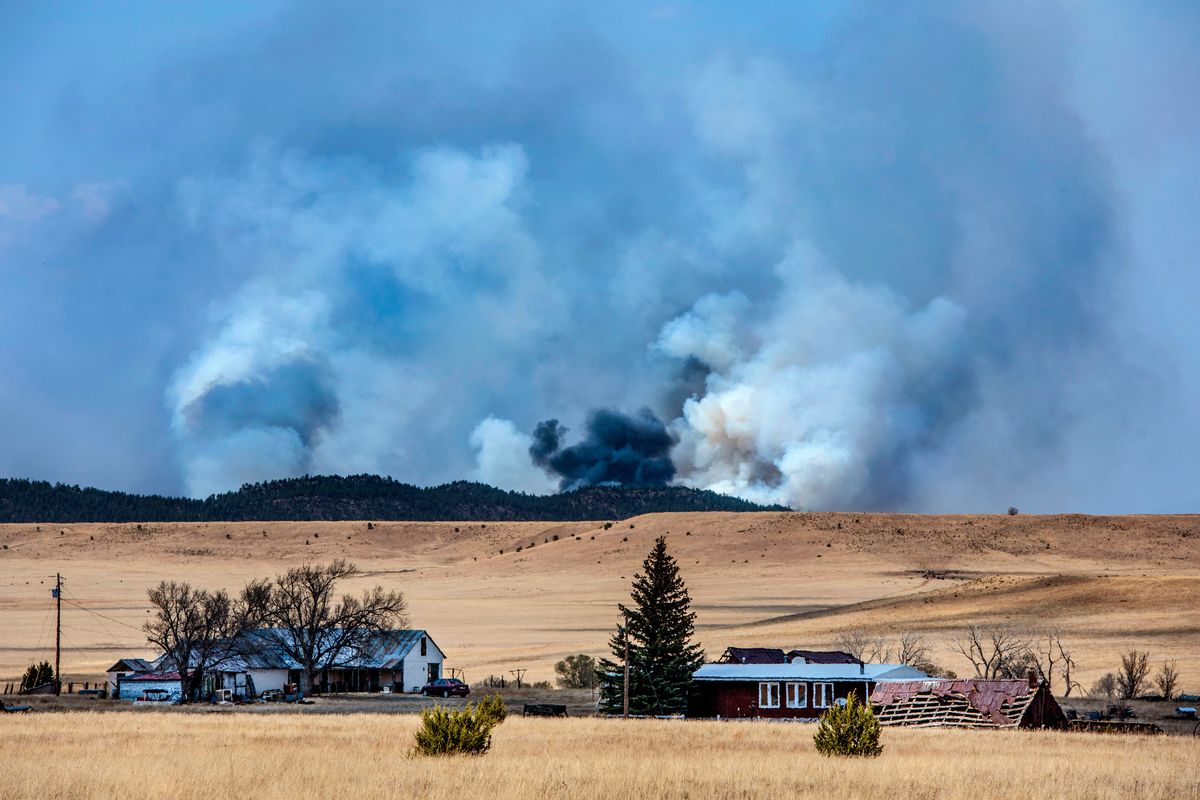Gusts, dryness could fan spring US wildfires again

ALBUQUERQUE, N.M. – More of the dry, windy weather that helped fan rare spring wildfires from New Mexico to Nebraska is expected to threaten the progress that firefighters have made, officials said Thursday.
A swath of the country stretching from Arizona to the Texas panhandle is expected to be hit the hardest by the return of the bad firefighting weather that has generated unusually hot and fast-moving fires for this time of year, forecasters warned.
Red flag warnings of extreme wildfire danger have been issued for some of the same states that experienced blazes that raced across the landscape last week. The warnings were in place for all of New Mexico and parts of Arizona, Nevada, Colorado, Texas, Oklahoma and Nebraska.
In drought-stricken New Mexico, flames jumped a line built to corral the northwestern perimeter of a blaze that already destroyed an undetermined number of homes in several villages while marching across 100 square miles of meadows and mountainsides.
Some of the nearly 1,000 firefighters in New Mexico battling what has become that largest wildfire burning in the U.S. worked Thursday to prevent it from moving into the rural community of Ledoux. That meant bolstering fire lines and sending in crews tasked with protecting structures, said Jayson Coil, a firefighting operations section chief.
“We recognize that over the next two days we’re going to have very unfavorable conditions with red flag warnings and then high winds – not as high as the big blow-up day last week but maybe 45 to 50 mph – and they’re going to want to push that fire up to the northeast,” he said.
That leads toward Ledoux, where many residents have already fled. Evacuations were kept in place for numerous other nearby communities.
Some light rain added moisture to bone dry vegetation in the Southwest early this week, but higher winds Wednesday likely dried out grass and other brush that can help fuel fires.
Authorities in northwestern New Mexico were refining the evacuation strategies that they were forced to quickly put in place last week, said San Miguel County Sheriff Chris Lopez.
“It doesn’t mean it will happen but it could happen, just like we saw when this fire blew up,” he said. “The danger is present and it’s very real.”
Authorities were still tallying how many homes had burned in the New Mexico fire. Some areas were still smoldering and officials reiterated that it was not yet safe enough to allow the return of some people who fled.
The Southwest has born the brunt of large fires. Five wildfire incident management teams have been mobilized to oversee the firefighting efforts, according to the National Interagency Fire Center.
One team was overseeing a large prairie fire in Nebraska, where more than 200 firefighters were battling a blaze that has been burning since last week.
About 68 square miles of mostly grasses and farmland have been blackened near Nebraska’s state line with Kansas, several homes were destroyed and at least one person was killed. That fire was 88% contained Thursday.
In Arizona, crews were trying to control two major wildfires, with strong winds on Wednesday pushing flames across more of the Prescott National Forest. Near Flagstaff, crews patrolled burned areas of another large fire amid milder weather that helps firefighting efforts.